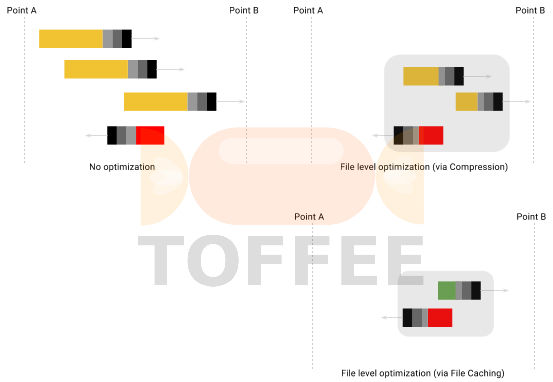Research
Research - Raspberry Pi
| 💎 TOFFEE-MOCHA new bootable ISO: | Download |
| 💎 TOFFEE Data-Center Big picture and Overview: | Download PDF |
iPerf Network Optimization - WAN Optimization Demo ↗
Saturday' 13-Mar-2021
Bulk Ping Tests - WAN Acceleration ↗
Saturday' 13-Mar-2021
TOFFEE-DataCenter a TOFFEE variant for Data Center applications ↗
Saturday' 13-Mar-2021
TOFFEE Data-Center optimized Internet of Things (IoT) Platform ↗
Saturday' 13-Mar-2021
WAN Optimization iPhone and Android - Mobile App ↗
Saturday' 13-Mar-2021
Featured Educational Video:
INDEX :: Content Delivery Networks or Content Distribution Networks (CDN) ↗
Saturday' 13-Mar-2021
Tracking Live TCP Sessions (connections) - WAN Optimization Device ↗
Saturday' 13-Mar-2021
Grid Hosting vs CDN Hosting ↗
Saturday' 13-Mar-2021
Research :: Optimization of network data (WAN Optimization) at various levels:

Learn Linux Systems Software and Kernel Programming:
![Linux, Kernel, Networking and Systems-Software online classes [CDN] Linux, Kernel, Networking and Systems-Software online classes [CDN]](http://sareesaremypassion.org/cdn/the-toffee-project/i/the_linux_channel_banner2.jpg)
Hardware Compression and Decompression Accelerator Cards:
![TOFFEE Architecture with Compression and Decompression Accelerator Card [CDN] TOFFEE Architecture with Compression and Decompression Accelerator Card [CDN]](http://sareesaremypassion.org/cdn/the-toffee-project/i/DOCUMENTATION/33/TOFFEE%20compression%20hardware.png)
TOFFEE-DataCenter on a Dell Server - Intel Xeon E5645 CPU:





